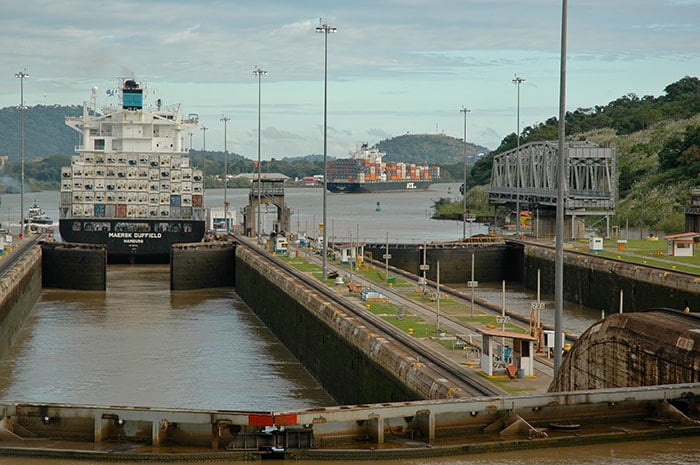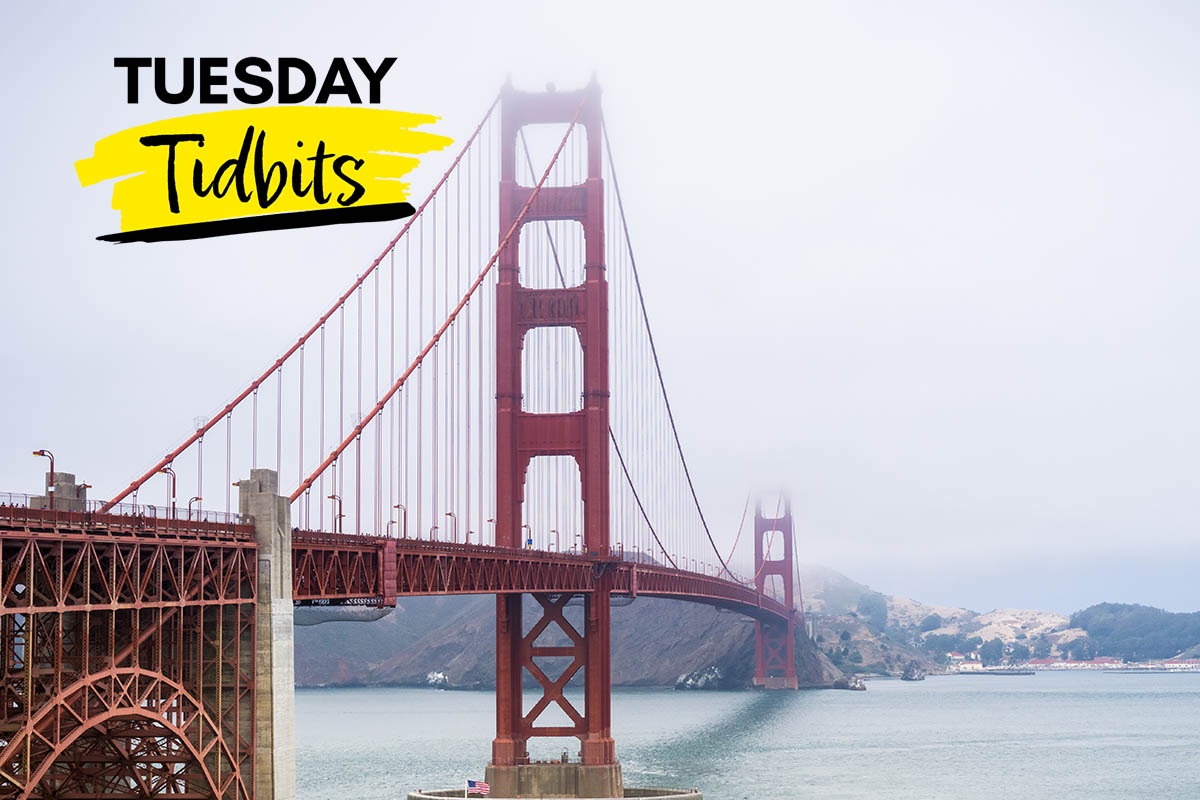After seeing the relative success of Egypt’s Suez Canal, which opened in 1869, America envisioned a shortcut through Central America as a way of strengthening its position as a two-ocean power. That shortcut, known as the Panama Canal, cost $375 million (somewhere close to $11 billion today) and 10 years to build, with the project coming in at 444 percent over budget. More than 100 years after its opening, it remains an audacious example of American ingenuity and know-how—a true engineering wonder.
Early on, engineers debated the very nature of the Panama Canal. They finally abandoned ideas about a sea-level canal (like the Suez) when engineer John Frank Stevens instead insisted upon a different option—a locks canal.
A locks canal is comprised of a series of locks that raise or lower ships as needed. But in the building of the Panama Canal, that design necessitated construction of another big project: the Gatún Dam at the Chagres River.
Gatún Dam, at one time the largest dam in the world, had to be built across the Chagres River to ensure the proper flow of water between the Pacific and Atlantic oceans. That formed Gatún Lake, a major component of the canal’s seemingly uphill water flow. The water doesn’t actually flow uphill; rather, it is pumped into the canal chambers from the lake.
How the Gatún Locks Work
Completed in August 1914, the Panama Canal works as a “water bridge” in which ships are elevated at about 85 feet (26 meters) above sea level by a system of locks.
The Panama Canal’s locking system was chosen because the Pacific Ocean sits at a higher sea level than does the Atlantic Ocean. Rather than excavate down to sea level, engineers determined that the best option would be a series of massive locking gates that would raise ships above sea level into a large man-made body of water called Gatún Lake.
The locks are operated using the gravity flow of water from the Gatún, Alajuela, and Miraflores lakes. In order to allow ships to pass the lock, each chamber must be filled with 26.7 million US gallons of water. The same amount of water must be drained from the chamber in order to lower the ship again.
When a ship enters the canal from the Atlantic end, travelling in a southeast direction, the first entry will be into the first (sea level) lock chamber located at the Gatun Locks. After the ship enters the chamber, the watertight lock doors are closed by the lock-master and the valve is opened to allow the flow of water from the adjacent second lock chamber, 28 feet above sea level.
Water flows through underground pipes into the first chamber until the water levels are equal. However, no pumps are used there; the entire operation of equalizing the water levels between the locking chambers is dependent upon the principles of gravity to move the water and the fact that water seeks its own level.
When the water levels of two adjacent chambers are equal, the water stops flowing from the water culverts.
Once the water levels between the first and second chamber are the same, the valve gets closed by the lock-master and the watertight lock doors between the first and second lock chambers are subsequently opened.
This process allows the ship to proceed to the second lock chamber. The operation is then repeated between the second and third lock chambers, which raises the ship to the level of Gatún Lake.
To fill the chamber with water and raise the ship, the miter gates and lower lock valves are closed, while the upper valves are opened. The water from Gatún Lake rushes in through 20 holes in the chamber floor. It takes about eight minutes for the chamber to completely fill and raise the ship.
The ship then travels through the lake until it reaches the Pacific Ocean, where it enters the Pedro Miguel Locks, a single step that lowers the vessels 30 feet (9 meters) to Miraflores Lake, which is at an elevation of 52 feet (16 meters) above sea level. The ship then passes through a channel almost 2 km long to the Miraflores Locks, which consists of two consecutive steps, where the ship is lowered back to sea level on the Pacific Ocean side. The ship then passes through a final seven-mile (11.2 km) passage after which it enters the Pacific Ocean.
The entire trip—from the Atlantic Ocean to the Pacific—takes an average of 8 to 10 hours.
What are your thoughts on the Gatún locks and the Panama Canal? Feel free to share your thoughts with us below.









The Atlantic and Pacific at the Ithumus of Panama are always at the SAME level. The purpose of the locks was and still is to avoid excavating an additional 81 feet thru the Continental Divide. With today’s excavating equipment the locks may not have been necessary.
One of the biggest thrills of my life was being a Boy Scout and canoeing through the Gatun Locks.
What would happen if both oceans were connected?
Would they not reach gravity equilibrium? ie Sea Level?
For more information, I’d suggest reading David McCollough’s book “The Path Between The Seas”.
This truly an engineering marvel. My only questions are; 1. is the canal big enough to allow ships from either side to make the trip at the same time and pass each other? 2. What cost does the shipper pay for the 8 to10 hour trip?
Ships can pass each other at the lakes within the canal, but not at the narrower sections. They alternate traffic directions to avoid ships going opposite directions at places other than the lakes.
Cost is based on weight. A typical sailboat pays about $1,000 for a full canal transit, while a container ship with over 14,000 shipping containers may pay over $1,000,000 for a transit.
A description of the “water saving basins that are part of the new 3rd set of locks would make a good follow-up article to this piece.
There is a correction in paragraph 4 because the water is never pumped. It is, however, reused. The newer locks at the Atlantic side have a total of 153 valves to direct the used water to storage basins where it can be reused to flow to lower elevations. This was necessary because the runoff from the rain forests is not unlimited.
How is the cost defined to use the canal
Yeah, but the ecosystems could be an absolute disaster when invasive species start moving in and out. Also, the salinity is different, again creating the conditions for another man-made ecosystem disaster
Yeah, but the ecosystems could be an absolute disaster when invasive species start moving in and out. Also, the salinity is different, again creating the conditions for another man-made ecosystem disaster
Second note, the gates were sized based on the largest anticipated Naval Ship of the Line.
I visited the Canal in 2015. It is every civil engineer’s “Mecca”, I believe.
Afterwards I read several books on this Canal and the biggest take-away, for me, was the bold leadership of fellow Maine engineer, John Frank Stevens, who jump-started the languishing project in 1905 by, first, shutting down the site to remove deadly mosquitoes along the full length of the Canal.
The French lost some 25,000 workers, mostly due to mosquito-borne diseases, and some $300M in late 1800’s ; Americans lost some 5,000 workers 1904- 1914 largely due to blasting accidents and collapsing excavations.
Finally, an unsung hero from Havana, Cuba, Carols Finlay, whom I never heard of ,and I’m 73, is credited with isolating and studying the two female mosquitos who carry so much death to humanity. One historian estimates that of all 108 billion of humanity that ever lived, some 52 billion perished due to mosquitos.
Curious engineers might read these three books on this historic engineering accomplishment:
https://www.amazon.com/Path-Between-Seas-Creation-1870-1914/dp/0671244094
https://www.goodreads.com/book/show/42983957-the-mosquito
https://www.amazon.com/John-Frank-Stevens-Engineer-Railroads/dp/0253010616
Engineers optimize the assemblies of Earth’s limited resources in order to harness or resist the forces of Nature. – JD Mooers
CORRECTION to previous comment: Carlos Finlay
“. . . . with the project coming in at 444 percent over budget. ”
I can’t stand articles that are so poorly researched. The Panama Canal was built on time and under budget. See,
https://www.msn.com/en-gb/money/other/huge-projects-actually-built-on-time-and-on-budget/ss-BB1gk5jG#image=6
OR
https://www.usace.army.mil/About/History/Historical-Vignettes/Civil-Engineering/107-Panama-Canal/
I started as an electrical helper in Pedro Miguel Locks in 1968 and 30 years later on June 3, 1998 I retired has the Operations Supervisor of Pedro Miguel Locks. I had the priviledge to have work on l three locks